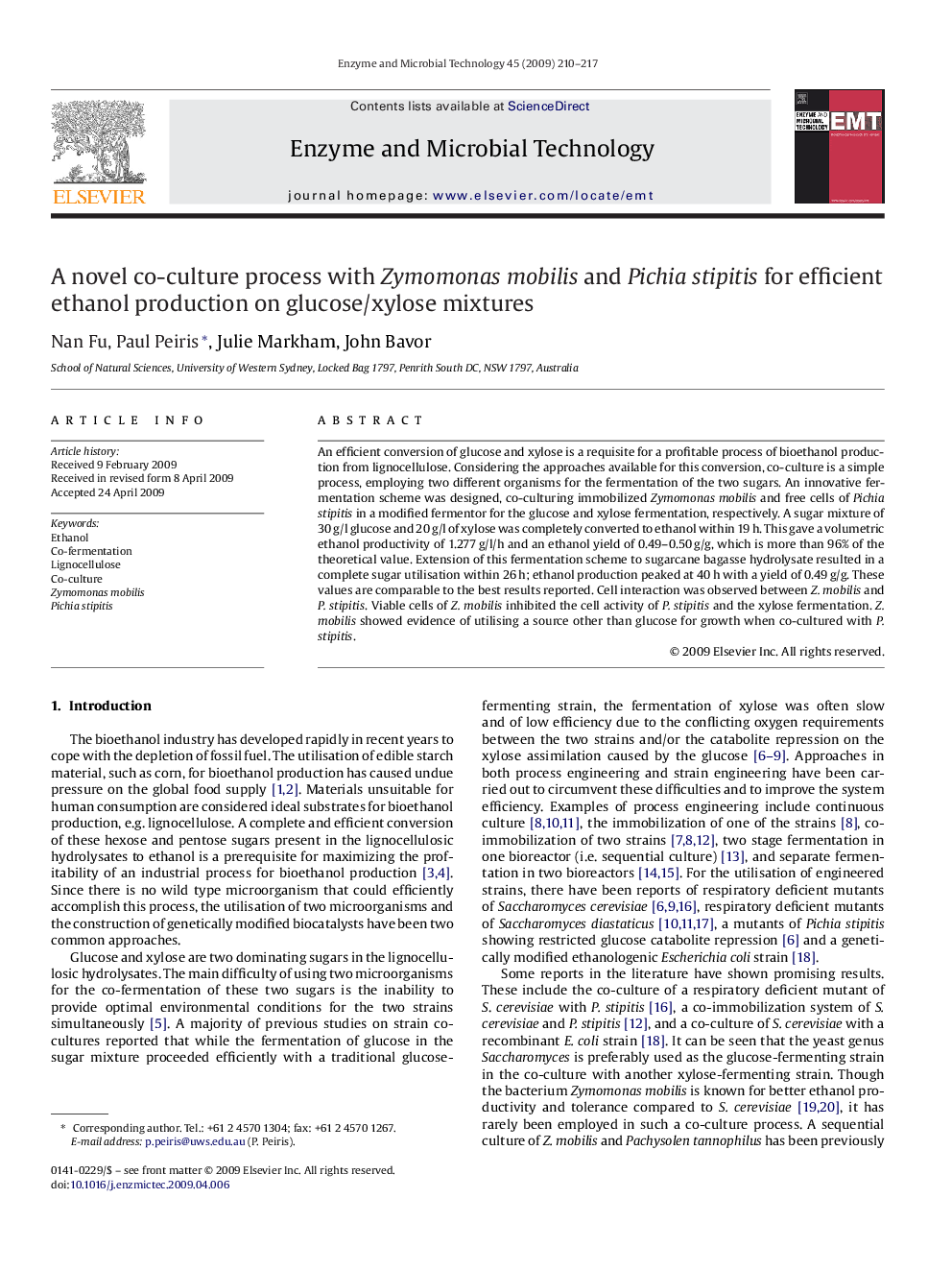| Article ID | Journal | Published Year | Pages | File Type |
|---|---|---|---|---|
| 17447 | Enzyme and Microbial Technology | 2009 | 8 Pages |
An efficient conversion of glucose and xylose is a requisite for a profitable process of bioethanol production from lignocellulose. Considering the approaches available for this conversion, co-culture is a simple process, employing two different organisms for the fermentation of the two sugars. An innovative fermentation scheme was designed, co-culturing immobilized Zymomonas mobilis and free cells of Pichia stipitis in a modified fermentor for the glucose and xylose fermentation, respectively. A sugar mixture of 30 g/l glucose and 20 g/l of xylose was completely converted to ethanol within 19 h. This gave a volumetric ethanol productivity of 1.277 g/l/h and an ethanol yield of 0.49–0.50 g/g, which is more than 96% of the theoretical value. Extension of this fermentation scheme to sugarcane bagasse hydrolysate resulted in a complete sugar utilisation within 26 h; ethanol production peaked at 40 h with a yield of 0.49 g/g. These values are comparable to the best results reported. Cell interaction was observed between Z. mobilis and P. stipitis. Viable cells of Z. mobilis inhibited the cell activity of P. stipitis and the xylose fermentation. Z. mobilis showed evidence of utilising a source other than glucose for growth when co-cultured with P. stipitis.
